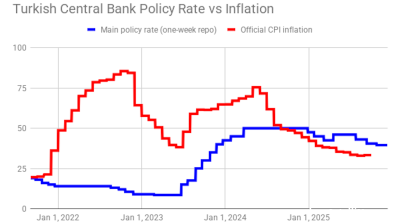Ukraine’s banking system is coping fairly well with the unprecedented crisis caused by the full-scale war with Russia. The majority of banking services remain available to customers, as long as the safety of personnel and clients is not compromised.
So far, liquidity challenges to banks have been minimal due to the hefty stock of high-quality liquid assets and limited deposit outflows. However, risks may increase as inflows of new funds to banks are expected to decline.
Profitability and solvency risks will be the key mid-term risks to the banking sector. We expect the vast majority of banks will end up with negative capital in 2022, due to war-related effects. Regulatory forbearance is thus going to be the only viable approach for the NBU this year and next.
The banking sector successfully managed to adjust its operations to war conditions and continues to function relatively well. Banks have efficient contingency and recovery plans that help them maintain operations in the areas that are not directly hit by the fighting. Ironically, the experience of personnel working remotely during the COVID-19 lockdown proved particularly valuable for banks.
Two local banks (out of 71) ultimately owned by Russian government (subsidiaries of Sberbank and VEB) were immediately sent into liquidation after the outbreak of the war. Those entities accounted for 2% of banking-sector assets, and their closure did not have any material impact on the stability of the financial sector.
In regions where the Russian army has invaded or threatens to invade, most bank retail outlets are closed. However, as of the beginning of this week, in about half of all Ukraine’s regions (predominantly western and central) more than 90% of all outlets of systemically important banks were open. In Kyiv roughly 1 in 10 outlets were open as of start of the week.
The war prompted the National Bank of Ukraine (NBU) to introduce limits on cash withdrawals, which are currently UAH100,000 per day for hryvnia accounts and UAH30,000 per day for FX accounts (roughly an equivalent of $1,000).
No limits on non-cash internal payments were imposed by the NBU; companies and individuals are free to make any transfers within Ukraine without limitations.
All payment systems are operating properly; supermarkets, gas stations, and pharmacies accept payment by cards. Non-cash payments are the only practical means of payments in the regions where cash delivery is impossible due to safety concerns. Cash is still the preferred option for many SMEs.
ATMs are replenished with cash where safe and practical. However, banks usually establish very low limits (an equivalent of about $100 or less) for daily cash withdrawal from ATMs.
To enhance protection of bank data, the NBU expeditiously allowed local banks to move/duplicate all information onto cloud facilities located in the EU / US / UK / Canada. This option helps alleviate the risk of information losses if there is physical damage done to the data storage capacities in Ukraine.
The banking sector has stayed fully liquid in both UAH and FX so far. The funding base has been robust. NBU officials indicated that between 24 February and 15 March, retail deposits in hryvnia increased 16% as individuals received salaries and social payments, while spending and cash withdrawals by households declined significantly. Business accounts in both UAH and FX declined 5%.
Banks apparently are benefiting from the extremely high stock of high-quality liquid assets (HQLA) that they accumulated before the war. Only two banks had a liquidity coverage ratio (LCR) of less than 150% (vs the regulatory minimum of 100%), and the vast majority of banks had an LCR of more than 200% before the war started.
However, looking forward, we cannot rule out that net outflows may increase. Inflows of money into accounts are likely to decline due to a material drop in business activities and growing unemployment. Banks are free to tap standard refinancing facilities of the NBU (loans collateralized with government securities) to cover possible outflows. In addition, the NBU introduced a blank refinancing facility with a cap of 30% of the pre-war retail deposits for each bank.
Nearly all banks have offered credit holidays to their customers. The holidays were not imposed by the law, but, rather, were a voluntary choice of banks. They are free to offer the schemes that best fit their clients’ needs. The most common approach was to grant an extension for principal repayment and a significant reduction in interest payments until the end of May. Some banks reduced rates on consumer loans to a symbolic 0.1% p.a. or less.
Many large banks (but not all) kept credit lines open to their retail customers. While individuals significantly increased the use of credit in the first couple of days of the war, the total retail corporate portfolio has been declining gradually in March. The corporate loan portfolio has stayed largely flat since the start of the war.
Banks claim they are ready to provide new loans to companies and within sectors that are critical for the economy in times of war. In particular, they are ready to meet the demand of farmers for loans to ensure a smooth spring sowing campaign. In addition, government decided to step in with partial loan guarantees so that banks’ potential credit losses are limited. Government also continues to maintain its policy of partial compensation of interest payments for SMEs.
P&L-wise, banks will be facing significant challenges. The volume of fees and commissions plummeted due to declining business activity. Interest income is set to plunge as banks temporarily reset interest rates on outstanding loans to nearly zero. But the greatest challenge of all is the expected deterioration in loan quality and a surge in loan-loss provisions. When credit-payment holidays are over in June, banks are likely to face a significant share of clients asking for restructuring or claiming inability to pay due to the damage done to their business.
It is nearly certain that even if the war is over in the near future, banks are still set to face substantial losses due to the damage to their physical assets and due to having to recognize adverse credit events. Those losses will erase banks’ capital. We expect the majority of Ukrainian banks, including the majority of systemically important banks, will end the current year with negative capital. Looking forward, reparations or other payments from Russia may become one of the sources of capital for local banks.
The NBU has no choice but to resort to the regulatory forbearance approach and let banks operate even if they violate standard liquidity and solvency ratios. The legislative changes that permit the NBU to keep undercapitalized banks in the market were recently passed. When peace is restored, the NBU will likely employ the approach it used in 2015-16, whereby banks will be given a reasonable period of time to comply with minimum prudential ratios.
Opinion

Western Balkan countries become emerging players in Europe’s defence efforts
The Western Balkans could play an increasingly important role in strengthening Europe’s security architecture, says a new report from the Carnegie Europe think-tank.

COMMENT: Sanctions on Rosneft and Lukoil are symbolic and won’t stop its oil exports
The Trump administration’s sanctions on Russian oil giants Rosneft and Lukoil, announced on October 22, may appear decisive at first glance, but they are not going to make a material difference to Russia’s export of oil, says Sergey Vakulenko.

Armenia’s painful reorientation toward the West
Yerevan’s drive to break free from its dependency on Moscow is generating profound internal political turbulence and exposing it to new external risks, says a report by the Central Asia‑Caucasus Institute & Silk Road Studies Program.

COMMENT: Europe’s “fake it till you make it” war approach cannot hold off Russia’s trillion dollar war machine
In their speeches on the war in Ukraine, European leaders appear like a video clip looped on repeat. Standing before the cameras they declare new packages of support for Kyiv and threaten new measures to pressure Russia as if it was still 2022.




